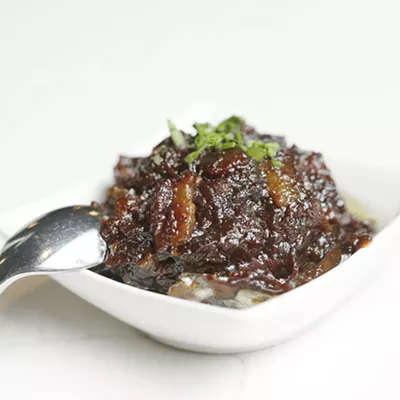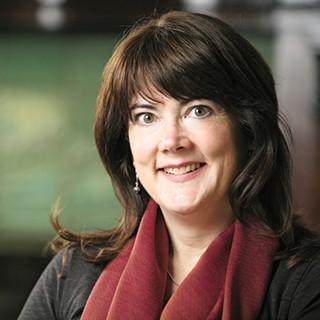
Desperation may be the cause of many "less than optimal" food choices. Hunger has a persistent way of asserting itself, calling to us to latch onto what is available and satisfying in the moment. Hence, the drive-thru and all its glories. And though we all know that's not the best way to fuel our bodies, what's the alternative? Figuring out a recipe, going to the store, hauling it all home and cooking?
Two health care providers in Spokane may have a solution.
"It's been my experience that people want to do the right thing," especially after a scary event like a heart attack or stroke, says Brea Seaburg, a doctor of nursing practice at the Prevention Center for Heart and Brain Health in Spokane. But for her clients, doing the right thing, both immediately and long term, can be a frustrating struggle.
Seaburg and her colleague, dietitian Monika Jacobson, struggled to find a single resource that they could hand out to provide a quick and easy way to create healthy meals without a lot of fuss. Finding nothing that aligned with their goals, they teamed up to create their own evidence-based cookbook, The Balanced Plate: A Simple Formula for Building Nutritious Family Meals.
Featuring recipes for breakfast, lunch and dinner, and yes, even dessert, the book is designed to assist rapid yet healthy meal planning, while offering educational, easy-to-digest suggestions along the way.
A simple round graphic assigned to each recipe reveals at a glance the parts of the balanced plate it contains; quite a few recipes contain all the elements, and it's easy to spot what's missing to fill in the gaps on others. Recipes are easy to follow and don't require elaborate technique; ingredients are, for the most part, familiar and inexpensive. But while it all appears rather straightforward, the recipes are carefully crafted and vetted, not just for flavor (by the duo's coworkers and young kids), but also for optimum nutritional value.
"For my whole career, people would come to me and say what do you think of the keto diet, what do you think of the carnivore diet, what do you think of the 'diet du jour,'" Jacobson says. "And I always come back to this balanced plate concept... With our book, we wanted to lay out that concept in the beginning and then teach people how to use that as a template for building their healthy meals moving forward."
The balanced plate contains one-quarter plate of fiber-rich carbohydrates, one-quarter plate of protein, one-half plate of non-starchy vegetables, with a little dollop in the center for fats.
"We do talk a lot about healthy fats, which for us means unsaturated fats for the most part," Jacobson says, noting that healthy fats are found in olive oil and avocado oil, as well as fatty fish like sardines and salmon.
“When you balance your plate, you have the fiber-rich carbohydrates, you have your protein, you have your healthy fats...”
"Fat is dense in terms of calories per gram, but we actually need fat. It's good for our satiety, it helps our stomach hold food a little longer so we feel fuller," Jacobson says. "Our brains need fat. You need fat to soak up all the goodness of certain nutrients and vitamins."
Carbohydrates, often vilified, occupy a quarter of the plate. "We don't shy away from carbs in this book, but we focus on naturally gluten-free grains, fruit, starchy vegetables and use the nutritional density of those foods as healthy foods that we want people to feel like they can eat," Jacobson explains.
Minimizing blood sugar spikes is an important element of the recipes. Seaburg, who discovered she has Type 1 diabetes in 2019, notes that at least 80% of the U.S. adult population has at least one marker of metabolic dysfunction, a condition that can progress to diabetes.
"One of the things we're really focused on, and I think is just huge right now in terms of overall health and chronic disease, is blood sugar stability," Seaburg says. "When you balance your plate, you have the fiber-rich carbohydrates, you have your protein, you have your healthy fats and your non-starchy vegetables, you're going to have a much more stable blood sugar response to that."
All the recipes are gluten-free. That's not because the duo believe everyone needs to avoid gluten. As they note in the book, "Due to the growing number of people living with non-Celiac gluten sensitivity (NCGS), we wanted our recipes to be accessible for every person in the household."
It can all quickly become rather complex, and that's where The Balanced Plate shines: The authors have done the behind-the-scenes work for you. Just pick a recipe and eat with confidence.
The Balanced Plate is available at Wishing Tree Books, Kizuri, Eclipse Yoga, Pleasantries, and the Prevention Center for Heart and Brain Health.






















